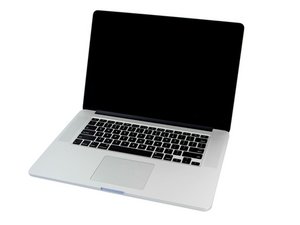Battery/Power
Check that the computer has power. Is the battery plugged in properly, or is it plugged into the wall properly, with all parts of the cable secure? It might sound obvious, but before you can move on to any of the other strategies on this list, you have to know the state of your Mac’s power.
If you’re lucky, you just found out that your Mac wasn’t powered, and fixed the connection. It turns on, and you get to stop reading this article and do something more fun.
Power Cycle
If your MacBook was not responding to the power button at all, and not charging, despite being plugged in and showing a glowing green light on the MagSafe power cable indicator.
This special power cycle takes about 20 seconds:
1. Unplug the battery.
2. Unplug the MagSafe power cable.
3. Hold down the power button for about 10 seconds and continue to do that.
4. While still holding the power button down, insert the MagSafe power cable and hold it for another 10 sec.
5. Release the power button after those 10 sec and make a “normal” press as if you would normally turn on your computer.
Reset Your SMC & PRAM
now that you can get the Mac to wake up, was to reset the SMC and PRAM.
SMC
Your Mac’s SMC (System Management Controller) controls its lights, fans, displays, power, and more.
If you own a recent MacBook without a removable battery (like the MacBook Air or Retina MacBook Pro) the steps to reset your SMC are as follows:
1. Shut down your MacBook.
2. Plug in the MagSafe power adapter to a power source, connecting it to the Mac if its not already connected.
3. On the built-in keyboard, press the (left side) shift+control+option keys and the power button at the same time.
4. Release all the keys and the power button at the same time.
5. Press the power button as normal to turn on the computer.
On a portable Mac with a removable battery (like the older MacBook Pro), the instructions are as follows:
1. Disconnect the MagSafe power adapter from the computer, if it’s connected.
2. Remove the battery.
3. Press and hold the power button for 5 seconds.
4. Release the power button.
5. Reconnect the battery and MagSafe power adapter.
6. Press the power button to turn on the computer.
PRAM
Reset the PRAM (parameter random-access memory) too, though it will not directly affects power.
To reset the PRAM, turn on your Mac and immediately after you hear the start-up chime, hold down the command+option+p+r keys, and continue holding until the computer restarts a second time. More modern MacBooks store the information that PRAM used to in NVRAM (non-volatile random-access memory), which is reset in the same way.
Cover the different ways to reset your SMC and PRAM depending on what kind of Mac you are using. They’re all quick, taking less than a minute.
Run Apple Diagnostics/Hardware Test
One neat thing about owning a Mac (I’m usually a Windows user) is that Apple provides its own Hardware Test (called Apple Diagnostics from mid-2013 onwards). It runs in its own bare-bones operating system, without the need to have the main operating system working.
The test is usually already on the Mac, but if you updated your operating system or had to re-install your operating system for any reason, they might not be loaded yet. Here’s where it gets more impressive: your Mac can actually connect to the Internet while the main operating system isn’t working, and automatically, magically, download the Apple Diagnostics/Hardware Test. I was floored.
To access the Apple Diagnostics/Hardware Test:
1. Press the Power button to start up your Mac.
2. Hold option+d keys immediately after the Apple startup chime until you see a “Starting Internet Recovery” message. You may be asked to select your WiFi network.
3. Give your Mac some time to download the tests.
4. Finalise installation when the tool asks you to select your language.
Once the Apple Diagnostics/Hardware is set up, go to the Hardware Tests tab and click on the big Test button. Extended testing checks RAM (Random Access Memory), one of the essential elements of every computer, among other things. It took me 45 minutes, but it can take longer depending on how much RAM you have installed. That’s why I recommend you run the standard test first, to save yourself some time.
Run Memtest
Unfortunately, Apple’s Hardware Tests are often considered inadequate for diagnosing RAM problems completely. MacRumors’ guide to Testing RAM recommends Memtest, a popular memory testing tool typically run from Terminal. There are free and paid options, and even a graphical user interface (GUI) version.
Run Memtest in Safe Mode, a version of your operating system that does some checks and prevents unnecessary software from running.
Starting Your Mac in Safe Mode
1. Press the Power button to start up your Mac.
2. Hold the shift key immediately after you hear the start-up chime.
3. Release the Shift key when you see the Apple logo appear on the screen.
If you discover a problem with your Mac’s RAM and you are able to open it, you might be able to switch the faulty memory or simply remove it (in case not all of your RAM is bad).
Recovery Partition
OS X provides a suite of tools to recover your Mac’s operating system called OS X Recovery. You can access Recovery Mode by holding down command+r immediately after you hear the start-up chime. After the Apple logo appears, you can release the keys and you will see a screen giving you options to:
1. Restore your Mac from a Time Machine backup.
2. Verify and repair connected drives using Disk Utility.
3. Check your Internet connection or get help online using Safari.
4. Install or re-install OS X.
We suggest you first use Disk Utility to verify that your start-up disk doesn’t have problems (although repair will check for problems and fix any it finds, so that may be more efficient). If that doesn’t help, try restoring from a recent Time Machine backup. As a last-resort, try a full re-install.
For those of you reading this article pre-emptively (lucky you!), consider this your one reminder to backup your data. Do it – it’s easy and worth it (trust me, speaking from experience). Don’t procrastinate backing up until you have a problem.

 1
1  1
1 
 2
2